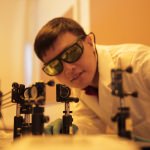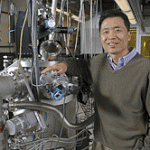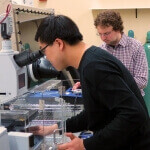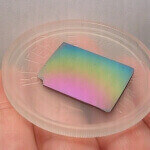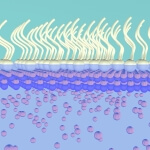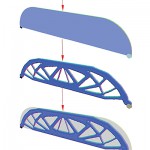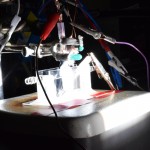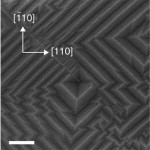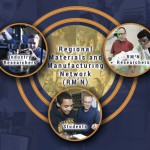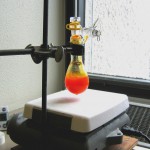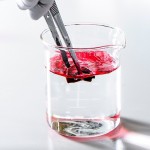Tag Materials
Tiny high-performance solar cells turn power generation sideways
The miniature solar panels could power myriad personal devices — wearable medical sensors, smartwatches, even autofocusing contact lenses.
Making molecules comfy: Ultimate challenge for UW’s ‘Glass Guy’
"If you ask an ordinary person, ‘What is glass?’ they will point to a window, but glass is a much broader category of materials,” says Mark Ediger.
Nanosheet growth technique could revolutionize nanomaterial production
Tiny sheets of the semiconductor zinc oxide could have huge implications for the future of a host of electronic and biomedical devices.
Designed defects in liquid crystals can guide construction of nanomaterials
Imperfections running through liquid crystals can be used as miniscule tubing, channeling molecules into specific positions to form new materials and nanoscale structures, according to engineers at the University of Wisconsin–Madison. The discovery could have applications in fields as diverse as electronics and medicine.
Souped-up software reduces guesswork, tedium in computer-aided engineering
A team of University of Wisconsin–Madison engineers recently released a new computer-aided engineering software program, and its users are already calling it a "gift from heaven."
Discovery of a highly efficient catalyst eases way to hydrogen economy
Hydrogen could be the ideal fuel: Whether used to make electricity in a fuel cell or burned to make heat, the only byproduct is water; there is no climate-altering carbon dioxide.
Discovery in growing graphene nanoribbons could enable faster, more efficient electronics
Graphene, an atom-thick material with extraordinary properties, is a promising candidate for the next generation of dramatically faster, more energy-efficient electronics. However, scientists have struggled to fabricate the material into ultra-narrow strips, called nanoribbons, that could enable the use of graphene in high-performance semiconductor electronics.
Cages offer new direction in sustainable catalyst design
University of Wisconsin–Madison engineers have developed a new approach to structuring the catalysts used in essential reactions in the chemical and energy fields. The advance offers a pathway for industries to wean themselves off of platinum, one of the scarcest metals in the earth's crust.
One hot idea: Thermal spray makes metal better
A company spawned by an experiment on lawn mower blades has mushroomed into a national leader in high-temperature coatings that alter the surface properties of metal.
New materials repel oil underwater, could better clean up oil spills
University of Wisconsin–Madison researchers have announced a significant step forward in the development of materials that can ward off oil - a discovery that could lead to new protective coatings and better approaches to cleaning up oil spills.
Solution-grown nanowires make the best lasers
Take a material that is a focus of interest in the quest for advanced solar cells. Discover a "freshman chemistry level" technique for growing that material into high-efficiency, ultra-small lasers. The result, disclosed today [Monday, April 13] in Nature Materials, is a shortcut to lasers that are extremely efficient and able to create many colors of light.
Lighting up the lab: Team harnesses light for controlled chemical reaction
When chemist Tehshik Yoon looks out his office window, he sees a source of energy to drive chemical reactions. Plants “learned” to synthesize chemicals with sunlight eons ago; Yoon came to the field a bit more recently. But this week, in the journal Science, he and three collaborators detail a way to use sunlight and two catalysts to create molecules that are difficult to make with conventional techniques — a finding that may eventually have implications for drug making and materials science.


